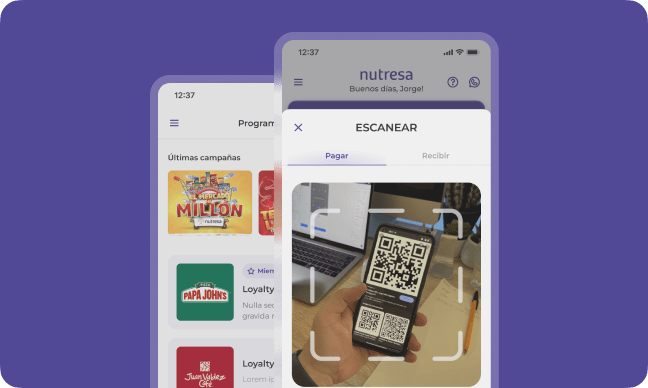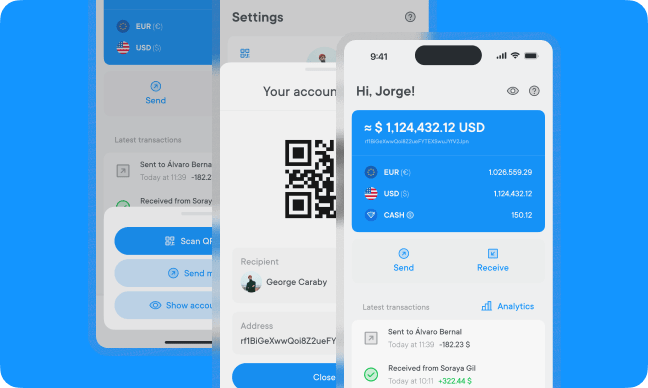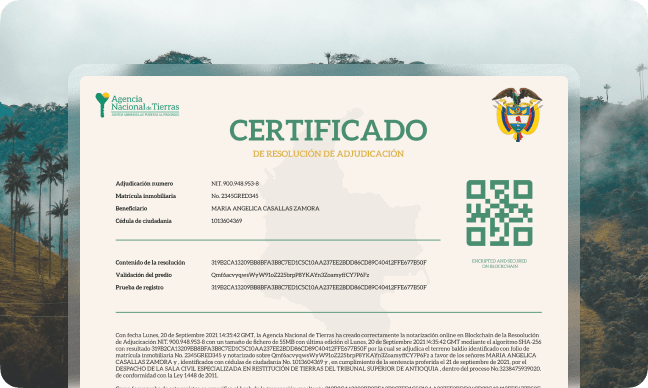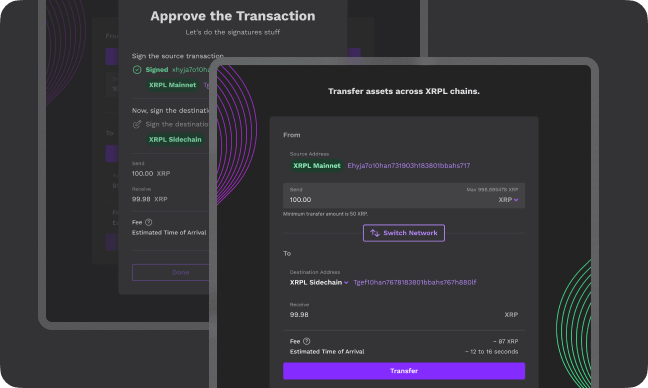Unique addresses (Devnet)
TVL (Devnet)
Transactions processed (Devnet)
Bridged tokens (Devnet)
No layer one is ever going to be everything to everyone and if we if we don't want that to be a huge downside, if we don't want that to fragment the community unity, what we need is the ability to have asset portability so that so that XRP is not limited to the XRP Ledger or other issued assets aren't limited to their home.
David Schwartz
CTO at Ripple and XRP Ledger architect
Enabling Seamless Interoperability
The introduction of the XRPL EVM Sidechain into the XRPL ecosystem marks a significant advancement, necessitating a bridge to ensure seamless integration between these blockchains. This critical infrastructure, known as the XRPL EVM Bridge, extends its functionality beyond mere connectivity between XRPL and its EVM Sidechain, facilitating interoperability with any Ethereum Virtual Machine (EVM) compatible network. Such bridges are intricate and delicate components of the blockchain technology landscape, addressing the pivotal challenge of fragmentation. They are instrumental in creating a cohesive and interconnected blockchain ecosystem, underscoring their importance as foundational elements that enhance the utility, efficiency, and expansiveness of blockchain networks.
What is a blockchain bridge
A blockchain bridge represents a technological solution that enables interoperability and the exchange of information across diverse networks. Serving as connectors, these bridges facilitate the transfer of assets and data among different blockchains. They tackle a significant challenge: the fragmentation of the blockchain ecosystem, characterized by the independent operation of numerous networks. Bridges enable users to explore new use cases, enhance liquidity, and augment the efficiency and utility of blockchain technology, promoting seamless integration across distinct blockchain ecosystems.
XRPL EVM Bridge
In this section, we delve into the intricate design and operational framework of the XRPL EVM Bridge, exploring its foundational architecture, the mechanisms enabling wide-ranging interoperability, and the secure transaction processes underpinning this revolutionary technology.
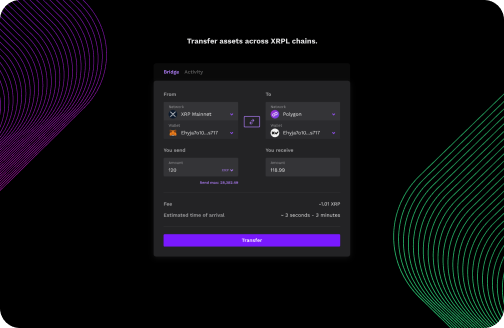
Bridge Design and Witness Mechanism
The XRPL EVM Bridge is founded on the XLS-38d standard, a proposal by Mayukha Vadari and Scott Determan, introducing a distributed bridge architecture via a network of entities termed witnesses. These witnesses are tasked with monitoring transactions across blockchain networks, ensuring a seamless and secure transfer of assets. Utilizing smart contracts written in Solidity and a witness server developed in GoLang, the bridge represents a pinnacle of secure and efficient cross-chain communication.
Interoperability and Asset Transfer
Expanding beyond the XRPL mainnet and EVM sidechain, the bridge’s compatibility extends to any EVM-compatible network, facilitating the transfer of XRP, IOUs, and ERC-20 tokens. This broad interoperability underscores the bridge’s significance in enhancing liquidity and enabling flexible asset management within the blockchain ecosystem.

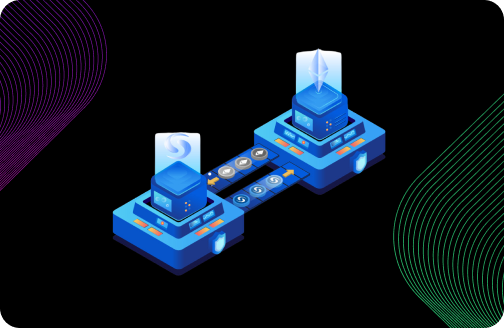
Secure Transaction Mechanics
The bridge employs a meticulous asset transfer process to maintain the integrity and value of transactions. For XRP transfers, assets are locked in the sending chain’s bridge contract and released on the receiving chain. In the case of IOUs and ERC-20 tokens, the bridge locks the original tokens on the source chain and mints equivalent tokens on the destination chain, with a reversible process ensuring the original tokens are unlocked when the minted tokens are returned and burned. This approach guarantees the continuity and equivalence of asset value across networks.
Audited by CertiK and Bishop Fox
Understanding the critical importance of security in the blockchain space, especially for infrastructure as pivotal as the XRPL EVM Bridge, we have committed to the highest standards of security and reliability. To this end, the bridge has undergone rigorous independent audits conducted by CertiK and Bishop Fox, leading firms in blockchain and cybersecurity. These comprehensive evaluations aimed to scrutinize every aspect of the bridge’s design, implementation, and operational integrity.
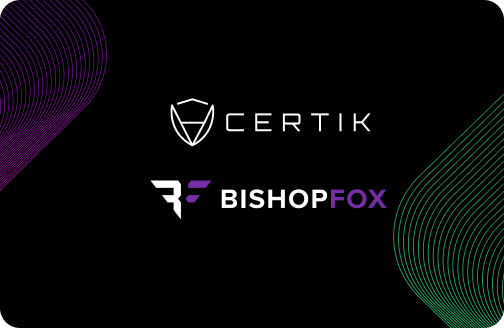
Benefits
Familiar and easy-to-use UX
The XRPL EVM Bridge boasts an intuitive, user-friendly interface, ensuring effortless navigation and transaction execution for all users.
Distributed Bridge Architecture
Increases security and transparency through a distributed network of witnesses, eliminating single points of failure.
Interoperability with All EVM Networks
Facilitates seamless asset and information exchange across a wide range of EVM-compatible blockchains, expanding the reach of XRPL.
Bridge Any IOU or ERC-20 Token
Enables the transfer of IOUs and ERC-20 tokens between networks, fostering greater flexibility and utility in asset management.
XRPL EVM Bridge: Unifying Blockchain Ecosystems
The XLS-38d amendment has, for the first time, enabled the construction of a decentralized bridge on the XRPL, marking a pivotal innovation in the ecosystem. This bridge stands out as a direct, distributed conduit between the XRPL and the expansive EVM ecosystem, including the XRPL EVM Sidechain. Leveraging a network of witnesses, its architecture guarantees a secure and transparent asset transfer process, showcasing a significant departure from more centralized approaches.
The XRPL EVM Bridge transcends simple connectivity between disparate blockchain networks; it achieves synchronization. By facilitating the XRPL’s native token, XRP, to seamlessly interact with the EVM Sidechain, the bridge considerably boosts the XRPL’s inherent capabilities. This breakthrough not only broadens XRP’s utility and accessibility but also integrates the XRPL ecosystem into the broader expanse of applications and services on EVM-compatible platforms.
